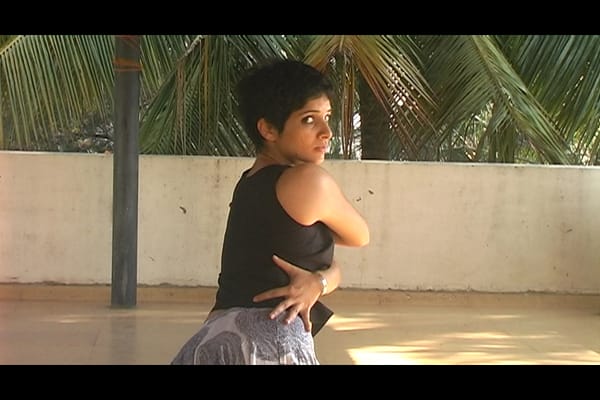This Sunday, ‘Jaaga’, a social meet up space for tech groups, artists and social organisations, saw a unique event. The première of the documentary ‘Good Girls Don’t Dance’ by Padmalatha Ravi was packed with audience, while a few had to stand in order to watch the show.
The show began after a small introduction by Padmalatha Ravi, the director of the documentary. The documentary started with a flurry of clips where bemused people at different places in and around Bangalore, pondered on how to answer the question, ‘What do you mean by a good girl?’ The terms traditional, docile, decent, obedient were employed to create the image of the perfect Indian girl. It was also interesting to see how the same people in the documentary were later, quicker to build the character sketch of a ‘bad’ girl, the antithesis to ‘good’ girl. The documentary is collage of people from various rungs of the society speaking about rape and sexual violence. Their opinions were neither black or white, but were in various shades of grey.
Almost 45 people – homemakers, daughters, grandmas, aged men, domestic workers, students – all seemed apprehensive of the camera and the theme at first, but slowly began to speak out their opinions. While most of them spoke English, some of them spoke in Kannada, Tamil, Telugu and Hindi.

A Still from ‘Good Girls Don’t Dance’
Ill-suited clothes on a woman was the main reason of sexual violence, according to most people on the screen. What a woman wears is the yardstick to measure her personality. A modern dress is an invitation to lusty eyed, they said. But there were a few who felt that no one should be a judge of any woman’s dressing style. It is her own personal choice and it is even preposterous to consider that the type of dress a woman wears determines her chances of becoming a target of rape.
The question about who is to blame in the event of a rape prompted various answers. Though most were in favor of the sexual offender being the cause, the responsibility of the victim was never completely ruled out. Clothes and behavior should not attract any attention from men, said most of the speakers. “An ideal girl is the one who stays away from conflict,” said a girl.
Contemporary dance performance by Shabari Rao, who is an independent dancer and a dance educator, has been blended beautifully with the sound bytes of people, to break the monotony. The dance also brings a metaphorical meaning to the film. Through her dance, we observe the expression of women bonded in society’s norms, trying to break free.

Padmalatha Ravi addressing the audience
The forty-five minutes of post-screening discussion added another twenty opinions to the existing voices in the documentary. The audience responded with much enthusiasm to the film and the issue it raised. Many people in the audience shared the fact that most of the public servants i.e. police officers and lawyers who are themselves are pillars of patriarchy, automatically push the blame onto the rape victims.
“Media is partly responsible for this, but we have to wake up and start sometime,” Padmalatha said in response to one of the questions from the audience. Though rape has been a social evil since decades, it is only in the light of recent events that media has taken a firm stand against sexual offenders. But there is also a flipside. A recent incident outside a pub in Hyderabad where news channel reporters filmed women who came to party without their permission raised many eyebrows. When objections were raised against their conduct, the journalists managed to file a case against the women for assault, she narrated.
“In other countries, I don’t feel afraid to make eye contact with men but here I feel afraid to even smile at them,” said Godhuli Chaudari, an artist and technologist from London.

Audience interacting with filmmaker Padmalatha Ravi
The film was successful in making one introspect about the ways women are treated in the country. During the discussion that followed the screening, Padmalatha explained how she contacted each of the participants through Facebook and other known references. She said that the footage of the unedited full length conversations with each of the participants is enough to cover another documentary which she intends to do in the future.
“We ended up having a second screening with another 10-15 people and had a very different kind of conversation! There were no feminists in this screening. One of them went on to ask why women should wear shorts, show cleavage and cry hoarse when something bad happens. I didn’t have to do much of the talking because Professor K Y Narayanswamy, who is Sahitya Academy awardee playwright, took them on,” says Padmalatha. .
Padmalatha Ravi is a journalist, formerly associated with Citizen Matters. She is drawn to issues related to gender, education and environment. Good Girls Don’t Dance is her first independent documentary. Padmalatha wants to showcase her documentary in schools and to government employees where she intends to raise questions that will bring change in the rigid traditional way of thought. All she need is a projector, basic sound system and a white wall. Interested can contact Padmalatha Ravi via padmalatha.ravi@gmail.com. ⊕